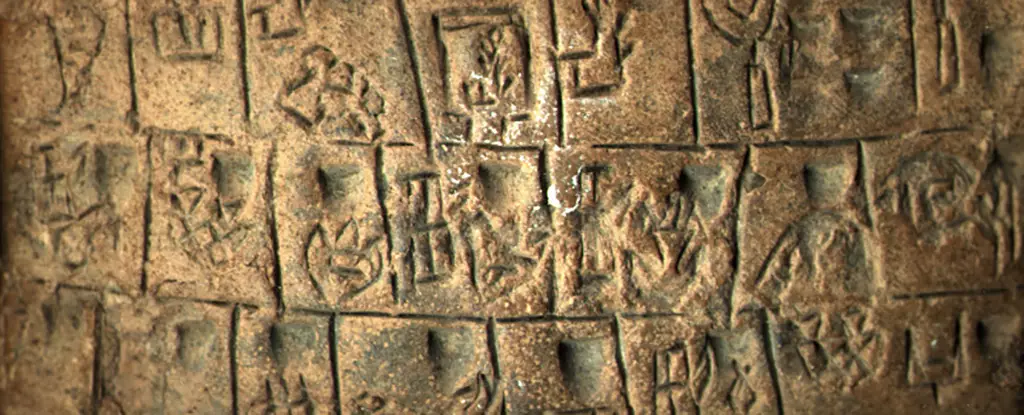The desire to document experiences, thoughts, and vital information is a characteristic intrinsic to humanity. This urge has been present for tens of thousands of years, evolving from primitive markings on cave walls to complex systems of writing. However, identifying the specific moment when early humans transitioned from simple visual symbols to an intricate system of writing remains challenging. Recent investigative efforts from a team at the University of Bologna have taken a significant step in exploring this evolution by investigating the relationship between ancient Mesopotamian cylinder seals and the nascent writing system known as proto-cuneiform.
Philologist Silvia Ferrara, leading the research team, emphasized the importance of examining the interconnection between specific images on seals and the shapes of early writing signs. Historically, there existed a recognition of the correlation between ancient seal-making and the birth of writing as a pivotal advancement in the history of communication. However, the specific imagery’s influence on shaping early signs had not been adequately examined—an oversight that Ferrara and her colleagues sought to address. Their inquiries focused on whether the visual representations on seals contributed significantly to the emergence of proto-cuneiform symbols.
To understand this linkage, the researchers meticulously analyzed cylinder seals created before writing was widely adopted in Mesopotamia. The period of focus included artifacts from a proto-literate phase, providing a chronological bridge between rudimentary visual communication and the eventual development of writing. What the researchers discovered was a fascinating continuity—the visual depictions of materials, activities, and daily life on these seals shared striking resemblances with proto-cuneiform signs.
One striking example highlighted in the research involves the representation of fringed textiles. The corresponding proto-cuneiform symbols for these textiles are characterized by angular forms and multiple vertical lines, conceptually resembling cloth. Similarly, depictions of weavers on ancient cylinder seals from notable cities such as Susa and Uruk demonstrate parallels in design. This convergence between visual imagery and symbolic representation suggests a shared cultural lexicon where everyday activities and objects were abstracted into a communicative language.
Moreover, the study showed that vessels depicted on cylinder seals, often illustrated with enveloping nets, correlated with specific proto-cuneiform signs that likely conveyed similar meanings. This subtle interplay of imagery hints at an intricate web of communication that predates formalized writing, suggesting that these early civilizations employed a visual language that played a critical role in commerce, trade, and social interaction.
The research underlines the notion that transitioning from pre-writing symbolism to a functional writing system represents a monumental leap in human cognitive abilities. Silvia Ferrara posited that the advent of writing does not simply signify an enhancement in communication but marks the critical juncture between prehistory and recorded history. As writing developed into a more sophisticated system, it enabled societies to maintain detailed accounts of trade, agriculture, and administration, thus supporting the intricate structures of emerging civilizations.
Proto-cuneiform artifacts are believed to have initially emerged as tools for accounting rather than storytelling or literature. These early inscriptions served vital purposes—tracking resources, documenting transactions, and facilitating trade. Long before the advent of writing systems, cylinder seals performed analogous functions, “printing” essential records onto clay tablets, thereby establishing a framework for societal organization.
The research conducted by the University of Bologna ultimately illustrates the significance of early symbols and seals in shaping one of the earliest writing systems. By bridging the relationship between proto-cuneiform and the imagery found on cylinder seals, it becomes evident that writing evolved from a rich tapestry of visual communication rooted deeply in the experiences of ancient peoples. As such, understanding writing’s early origins not only enriches our comprehension of human history but also deepens our appreciation for the enduring human need to connect through language. The findings also serve as a reminder of the intricate connection between artifacts, cultural practices, and cognitive development throughout human history.



Leave a Reply